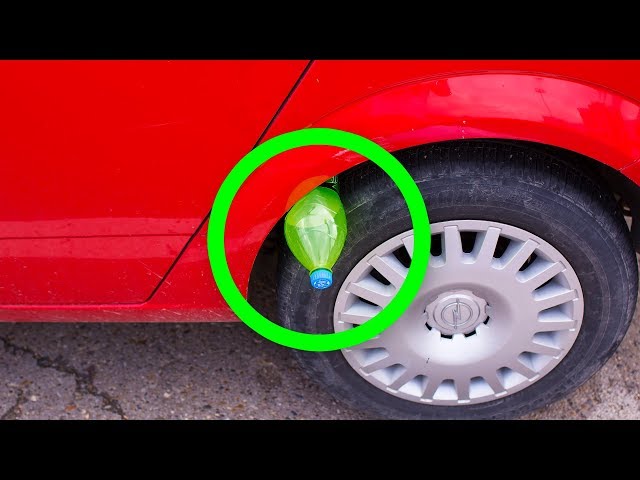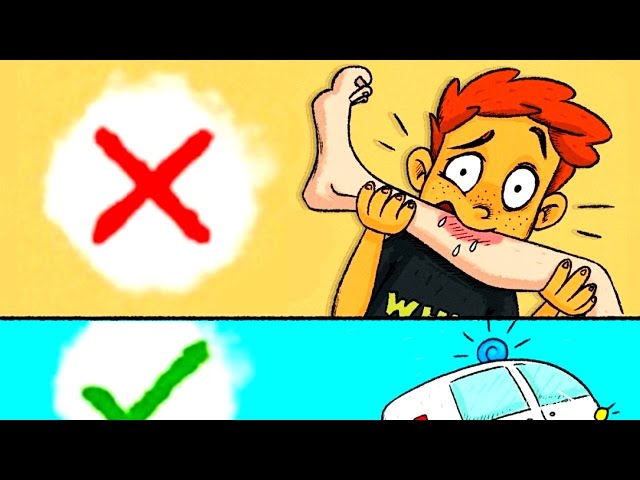9 Ways to Handle Emergency Situations Quickly and Effectively
Which life-saving skills should everyone know? How to save someone's life in a critical situation? Did you know that hydrogen peroxide and iodine could be dangerous for you? Here are several of the most widely spread mistakes people make when performing first aid. TIMESTAMPS Putting a spoon into the mouth of a person having a seizure 0:35 Cardiac compressions can lead to lung damage 1:24 Paracetamol may lead to liver issues 2:15 Throwing back your head or lie on your back with a nosebleed 2:57 Pulling a road accident victim from the car 3:46 Taking vomit-inducing drugs in case of severe poisoning 4:18 Applying a tourniquet to stop bleeding 5:05 Curing wounds with hydrogen peroxide and iodine can be dangerous 5:44 If you’re bitten by a snake or a venomous insect, don’t suck out the venom 6:24 SUMMARY - When in a fit, a person can swallow or choke on an object placed in their mouth to protect the tongue. A person may start shaking uncontrollably and even go purple, but seizures are self-limiting, and the body is incapable of doing much harm to itself. - Cardiac compressions can easily result in broken ribs, which may severely damage the lungs and heart. You should only do cardiac compressions if you’re sure the person has no pulse, isn’t breathing, and there’s no doctor around. - Paracetamol, or acetaminophen, relieves pain and inflammation, and it is a part of many modern drugs. Keep in mind that its overdose may cause liver and kidney failure. - If you do this, the blood pressure in your head rises. You can’t know how bad the bleeding episode is, so the blood can get into your lungs or cause vomiting. To do it right, hold your head upright to reduce pressure, apply a cold pack, and then close either nostril with your finger for 15 minutes. - If a person is injured with a risk of head, neck, or spine trauma (for example, they don’t feel their limbs, but there’s no blood), call an ambulance. Also, watch the victim’s breathing until the doctors arrive. - Emetic drugs can cause an esophageal burn and make way for poisoned vomit into the lungs. In a suspected poisoning, call an ambulance, describe the symptoms and a probable source of poisoning, and write down the prescribed actions. - An incorrectly applied tourniquet may result in excess limb pressure and can lead to amputation. It doesn’t stop the bleeding but prevents blood circulation which leads to necrosis. To do it right, apply a large amount of sterile gauze or clean cloth to the wound and press tightly — this should be enough until the ambulance arrives. - Peroxide destroys connective tissue cells, preventing the wound from healing. Iodine and alcohol burn healthy cells and can induce pain, shock, and burns if applied to a wound. - The venom mixes with your saliva and makes itself a new target of your mucous membrane. This will accelerate the poisoning and can result in lung edema and heart failure. Subscribe to Bright Side : https://goo.gl/rQTJZz For copyright matters please contact us at: welcome@brightside.me ---------------------------------------------------------------------------------------- Our Social Media: Facebook: https://www.facebook.com/brightside/ Instagram: https://www.instagram.com/brightgram/ 5-Minute Crafts Youtube: https://www.goo.gl/8JVmuC ---------------------------------------------------------------------------------------- For more videos and articles visit: http://www.brightside.me/









![CAT VIDEOS ★ FUNNY Cat Videos (HD) [Funny Pets]](https://i.ytimg.com/vi/Yt73dFJV_RM/hqdefault.jpg)

![Matoma & Enrique Iglesias – I Don't Dance (Without You) [feat. Konshens] [Official Lyric Video]](http://totallyfunplace.com/uploads/images/_D1rrdFcj1U.jpg)






